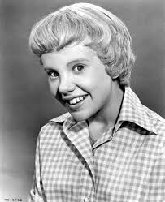Then we had a lot of rain! The temperatures went up and then down from 35º to 50º and back down to 45º.
 Actually, a way to keep birds from nesting in your mailbox!
Actually, a way to keep birds from nesting in your mailbox! In the late 19th century, animal-shaped crackers (or "biscuits" in British terminology) called "Animals" were imported from England to the United States. The demand for these crackers grew to the point that bakers began to produce them domestically. Stauffer's Biscuit Company produced their first batch of animal crackers in York, Pennsylvania, in 1871. Other domestic bakeries, including the Dozier-Weyl Cracker Company of St. Louis, and the Holmes and Coutts Company of New York City, were the predecessors of the National Biscuit Company, today's "Nabisco Brands".
Animal biscuit crackers were made and distributed under the National Biscuit Company banner. In 1902, animal crackers officially became known as "Barnum's Animals" and evoked the familiar circus theme of the Barnum and Bailey Circus. Later in 1902, the now-familiar box was designed for the Christmas season with the innovative idea of attaching a string to hang from the Christmas tree. Until that time, crackers were generally sold only in bulk (the proverbial "cracker barrel") or in large tins. These small cartons, which retailed for 5 cents at the time of their release, were a big hit and are still sold today.
The number and variety contained in each box has varied over the years. In total, 53 different animals have been represented by animal crackers since 1902. In its current incarnation, each package contains 22 cookies consisting of a variety of animals. The most recent addition, the koala, was added in September 2002 after being chosen by consumer votes, beating out the penguin, walrus and cobra.
In 1948, the company changed the product name to its current designation of "Barnum's Animals Crackers". In 1958, production methods changed to improve the cookies' visual details. Until then, animal shapes were stamped out of a dough sheet by a cutter. This produced outlines with little sophistication. By installing rotary dies, bakers can actually engrave details onto each cookie, creating a more intricate design. The rotary dies are still used today.
Barnum's Animals Crackers are all produced in the Fair Lawn, New Jersey, bakery by Nabisco Brands. More than 40 million packages of Barnum's Animals Crackers are sold each year, both in the United States and exported to 17 countries worldwide. The cookies are baked in a 300-foot-long traveling band oven. They are in the oven for about four minutes and are baked at the rate of 12,000 per minute. About 15,000 cartons and 330,000 cookies are produced in a single shift, using some 30 miles of string on the packages. This runs to nearly 8,000 miles of string a year. Those bright circus boxes are produced in three colors—red, blue, and yellow—with different variety of animals on each.
In August 2018, Mondelez International (the parent company of Nabisco) released a new design for its Barnum's Animal Crackers boxes in the United States, showing the animals freed from their traditional circus boxcar cages. This design change was made in consultation with People for the Ethical Treatment of Animals (PETA), one year after the Ringling Brothers and Barnum and Bailey Circus ceased operations. The new design shows a zebra, lion, elephant, giraffe and gorilla together in an African landscape.
Manufacturers
Nabisco makes Barnum's Animal Crackers, with their distinctive package art of a circus wagon fitted out as a cage and animals within it. “Barnum” refers to the famous showman and circus entrepreneur P. T. Barnum, but Nabisco does not pay a licensing fee to Barnum and Bailey Circus. The product actually says “Barnum's Animals”, subtitled “Crackers”. Half of the wheels are printed on the large sides of the box but at one time the printed wheels continued to the bottom of the box, and were partially perforated along their outline, which allowed punching the wheels out and standing the wagon to stand on its wheels. Responding to requests from PETA, in August 2018 Nabisco released new package art displaying the animals roaming free.
Stauffer Biscuit Company of York, Pennsylvania, also has a line of animal crackers, which are now distributed by several major discount retailers. Their use of the spices nutmeg and mace give the basic animal cracker a slightly different character from the Nabisco crackers. Former owner Rodney Stauffer now has his own company Rodney's Animal Crackers that also produces animal crackers.
Austin, a division of the Keebler Company, also makes a variety of animal crackers. The Austin variety has similar nutritional content and animal shapes. The Austin product is labeled under the name of the Kellogg Company, which acquired Keebler in 2001.
The Borden corporation also produced a brand of animal crackers, until the late 1970s. They came in a red box, which featured the famous Elsie the Cow logo.
Market Square Food Company Inc. in Illinois has also produced its own brand of animal crackers since 1982. Its animal crackers are distributed by several major retailers throughout the United States and internationally.
Sam's Club distributes animal crackers under its ‘’Member's Mark’’ house brand.
- 1/2 stick butter
- 3 cups chopped cabbage
- 1 cup chopped onion
- 1 cup sliced celery
- 1 cup thin carrot slices
- 1 (14-1/2-ounce) can cream-style corn
- 1 cup frozen peas
- 2 cups milk
- 2 cups chicken broth
- 1 teaspoon dried thyme
- 1 teaspoon salt
- 1/4 teaspoon pepper
- 1/4 teaspoon garlic powder
- 2 cups (8 ounces) shredded cheddar cheese
- In a soup pot over medium-high heat, melt butter; saute cabbage, onion, celery, and carrots 8 to 10 minutes or until tender.
- Add corn, peas, milk, chicken broth, thyme, garlic powder, salt, and pepper; simmer about 15 minutes. Add cheese, stirring until melted; serve immediately.
*** To lighten up this soup a bit, start with olive oil instead of butter and use a reduced-fat cheddar cheese.

1946 – Hayley Mills, English actress
1961 – Jane Leeves, British actress

















